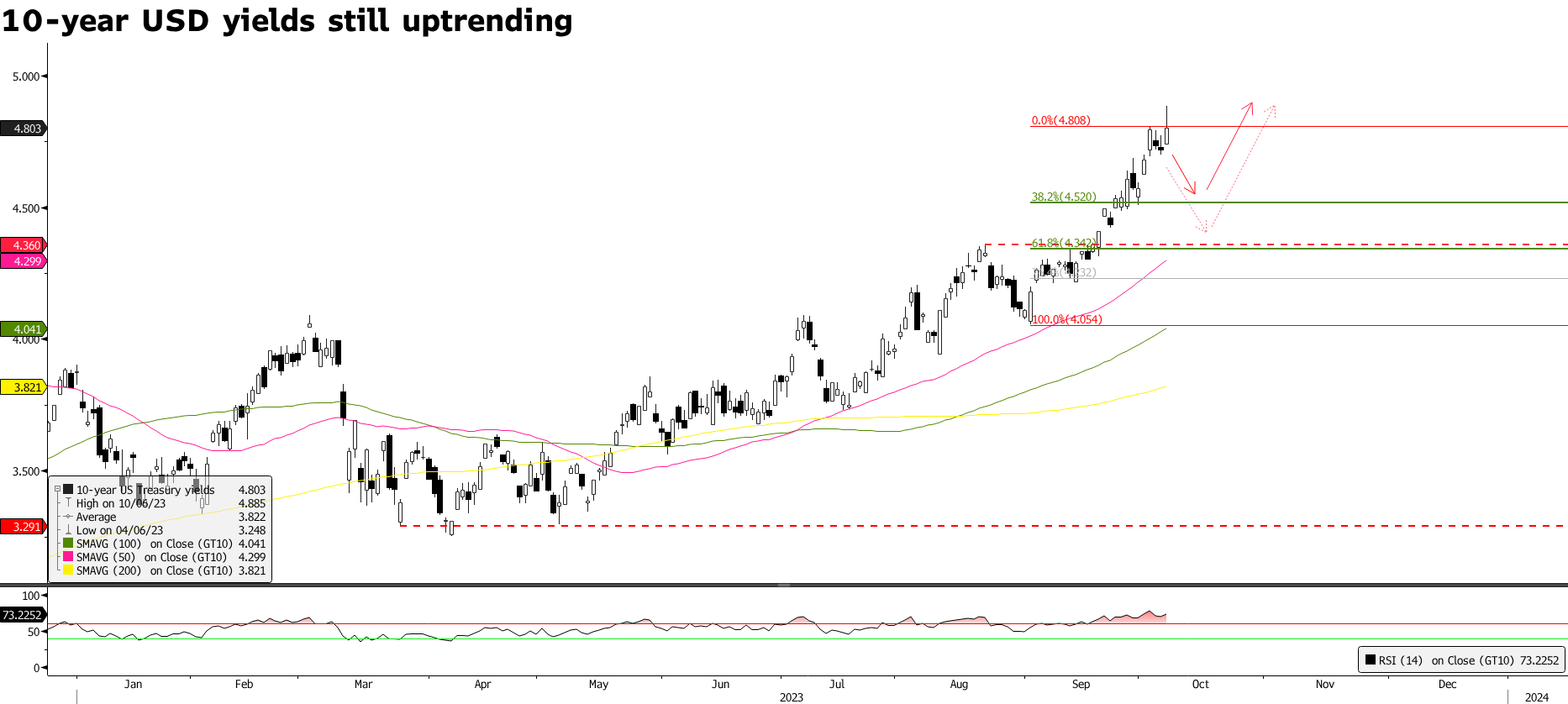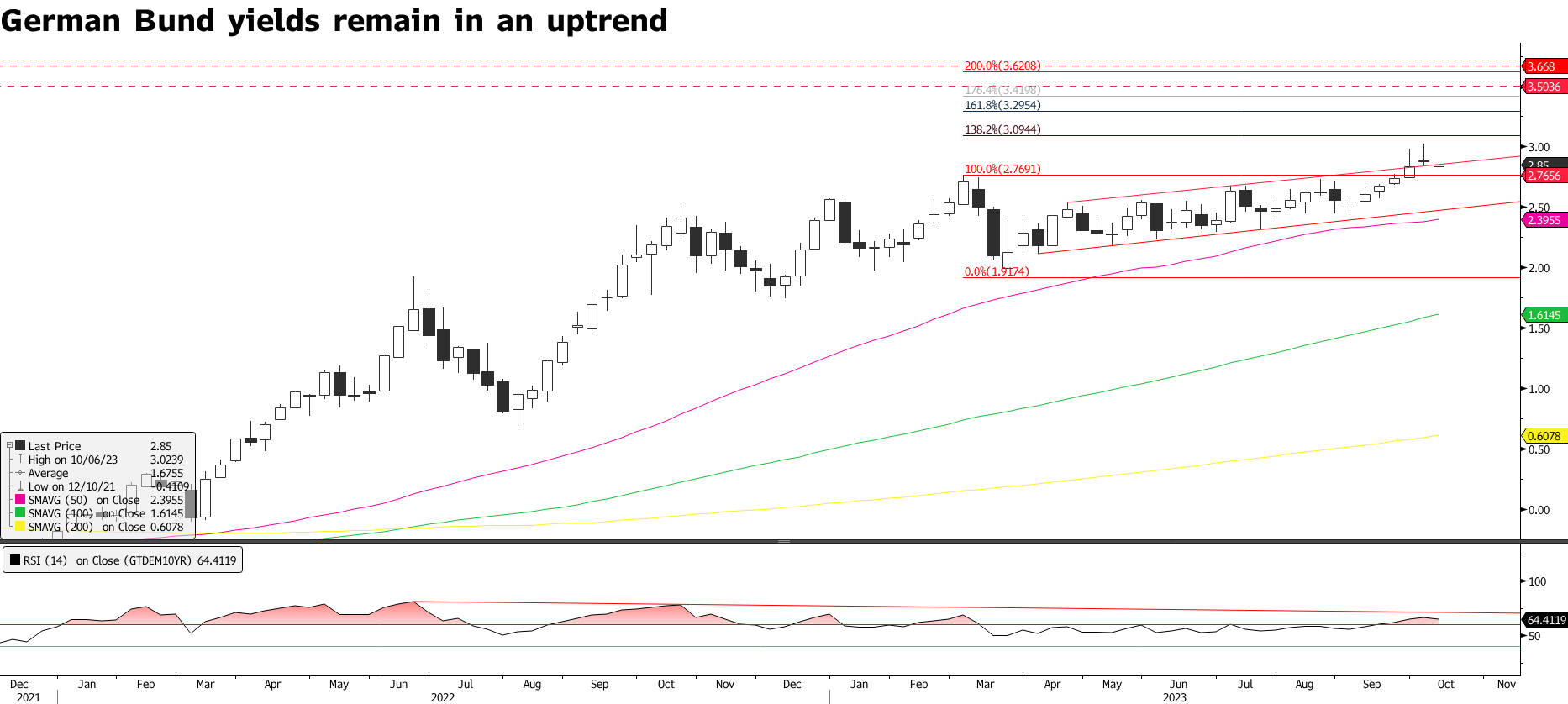The Federal Reserve is facing a complex situation, which might lead to keeping rates on hold at the next FOMC meeting.
With events quickly escalating in the Middle East and the recent bond sell-off pushing long-term yields to new multi-decade highs, policymakers will be reluctant to hike.
Yet, the central bank might need to keep a hawkish bias as the conflict in Israel could drive higher commodity prices, particularly oil.
That will translate in the front part of the yield curve remaining anchored, while long-term Treasuries might initially gain from safe-haven demand. However, they will still need to navigate through 10-year and 30-year auctions this week, which might provide support against declining yields.
It is important to note that for 10-year US Treasury yields to enter a bearish trend, they will need to break below 4.05%.
As yields closed at 4.8% last week, we consider that unlikely, especially as the federal deficit is swelling and inflation remains a concern.
Cash bond trading is closed today due to bank holidays in Japan and the US. However, bond futures can suggest where long-term yields might be headed this week once the US bond market opens on Tuesday.
As the three-month SOFR rate still sees rates not dropping below 4%, it is safe to expect 10-year US Treasury yields to remain above 4.5%.

Source: Bloomberg
Interestingly, safe-haven demand did not drive yields in the euro area much lower. Ten-year German Bund yields are just three basis points below their Friday's close, and they are testing their ascending trendline.
That is astonishing if we consider that with news of an Israel-Hamas war, German Industrial Production numbers surprised on the downside, pointing to a deepening recession in the largest European economy.

Source: Bloomberg
Overall, we remain defensive and continue to be wary of duration. As the front part of the yield curve remains anchored, investors can maximise returns while limiting duration and volatility risk.
We also continue to favour inflation linkers with short-term maturities and steepeners.
Althea Spinozzi is senior fixed income strategist at Saxo Bank


